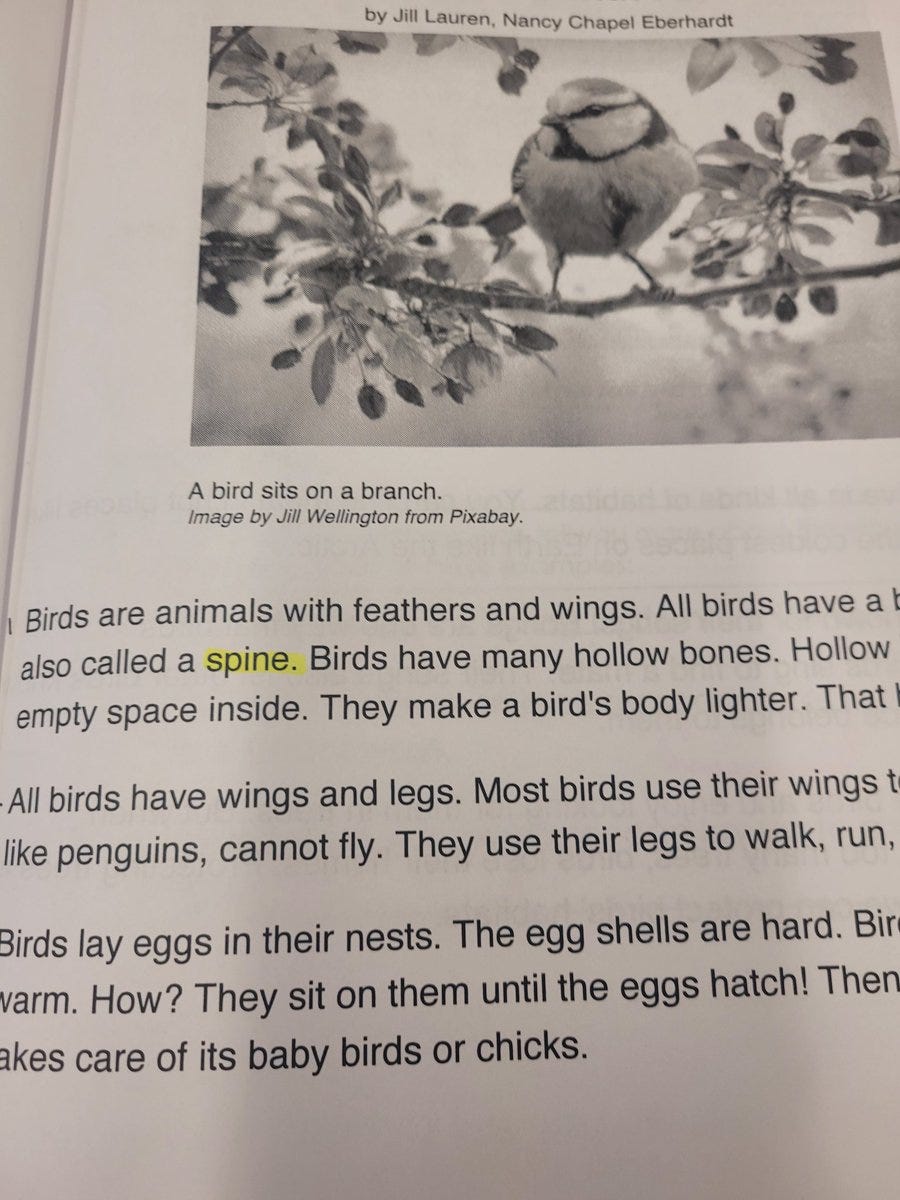Last year, through her Goyen Literacy Fellowship, reading interventionist Catlin Goodrow shared her work in a series of informative and resource-ful Twitter/X threads. This summer, we are going to reshare them on this blog. And if you like Catlin’s work, pre-order her book about helping older elementary school students access complex texts!
When I started as an interventionist, I wanted to bring more knowledge and vocab-building to my students, who no longer needed an intensive focus on foundational skills.
I began to develop units - similar to those in the gen-ed classroom. This is our unit on birds. I begin with simple texts to build general knowledge of the topic. Our first guiding question: What do all birds have in common?
For the first phase of the unit, we read three texts from Readworks and Newsela, starting with the simplest text at the lower end of the grade 2-3 CCSS Lexile band, and then moving into more complex texts.

In the second phase of the unit, we read a text about bird adaptations, digging into how birds are different. I chose the text because it is hilarious and gives many examples of how adaptations help birds survive. I wanted kids to gain an understanding of this crucial science topic.
In the third phase, we dig deeper into a single adaptation: migration. (We are also getting practice with the final stable syllable "-tion.") This book has a lower lexile than Spit Nests, but the information is more qualitatively complex.
In my next post, I will explore how I scaffold these challenging texts.







Including great books is so important for intervention! (And not typically included 🙃)
Love this idea for moving intervention groups through various types of text to scaffold and also tackle information in progressively more difficult situations. —I cannot wait to try (& fly with) these tremendous texts along with my third graders this upcoming school year!🫶📚🔍📝✨